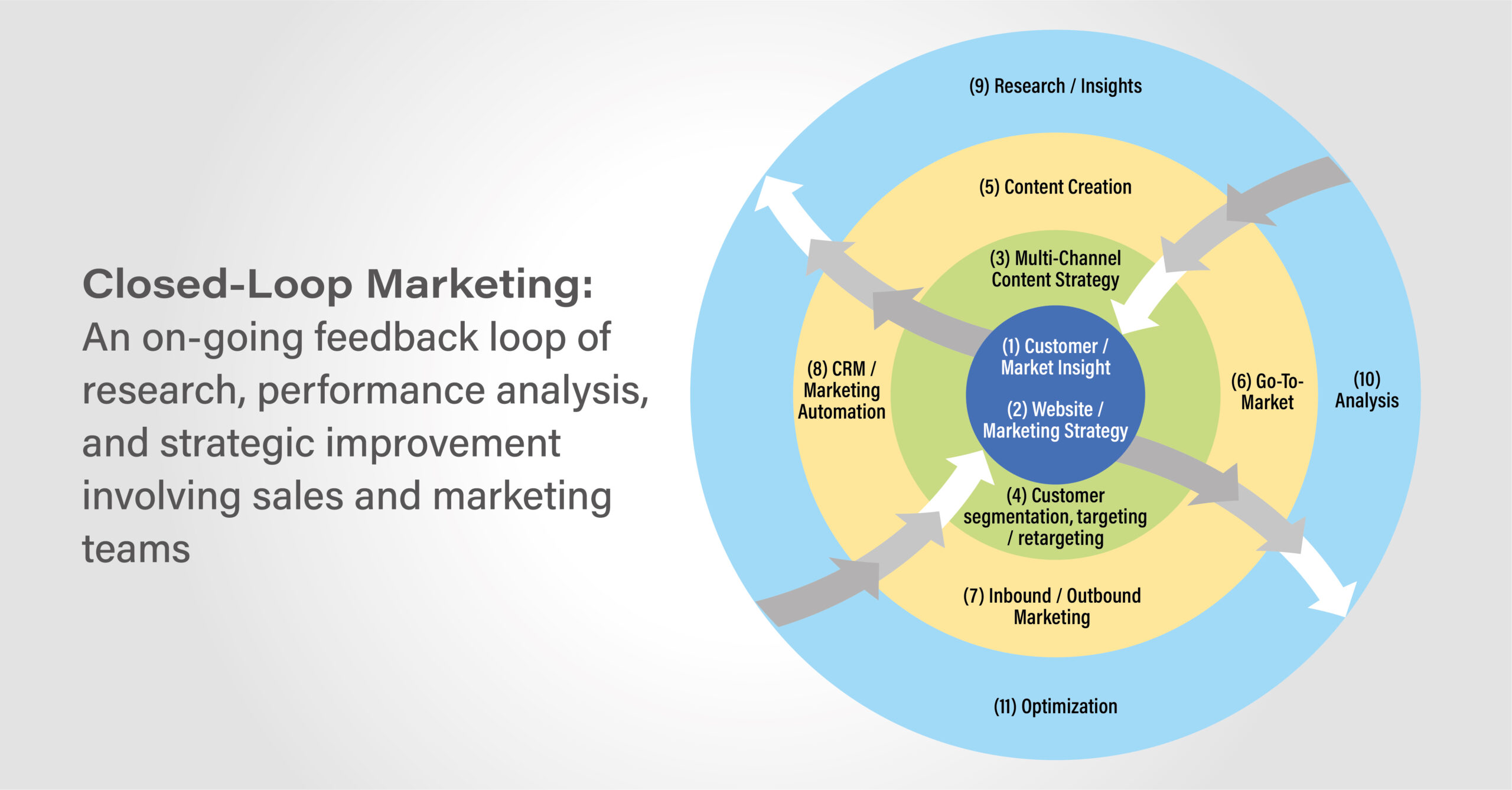
20 Sep Amplified Returns with Closed-Loop Marketing
Most marketers can relate to the following quote by American merchant and marketing pioneer John Wanamaker, “Half the money I spend on advertising is wasted; the trouble is I don’t know which half.”
Tracking ROI is very often the most challenging task for marketers, thanks to the presence of multiple touchpoints in the marketing and sales journey, especially at the bottom of the funnel. It is estimated that about 63% of digital marketers are not confident in their ability to measure it.1 Also, marketers estimate that they are wasting 26% of their budgets on futile activities.2
An effective solution is closed-loop marketing, which comprises an on-going process of research, performance analysis, and strategic improvement that involves both the sales and marketing teams, who report on leads in an endless feedback loop.
This enables organizations to distinguish the sales-driving activities from the ineffective ones and course-correct marketing strategies at the right time.
The Closed-Loop Marketing Process:
- Identify marketing goals: Understanding the marketing goals—generate leads, drive sales, or improve brand awareness—is the first step in closed-loop marketing.
- Gather data: Collating every bit of data, right from the customer awareness stage and purchase, to post-purchase is a critical activity. This data proves instrumental in identifying flaws and gaps in the marketing campaign.
- Analyse data: Analysing data shows common patterns, trends, and insights that will help course correction.
- Test and improve: This is a continuous process and involves implementing different strategies and approaches and see the results. This helps sharpen marketing campaigns.
- Continue the process: Closed-loop marketing is a continuous process. Adding to and refreshing data helps improve campaigns and derive better results.
Improve campaign efficacy:
Reduce cost per lead:
Improve customer experience:
To summarise, as getting constant results from marketing activities in the evolving digital era becomes more and more complicated, closed-loop marketing emerges as a highly effective process to enable seamless and holistic engagement between marketing and sales teams, helping to derive consistent results and constantly improve campaign performance.






No Comments